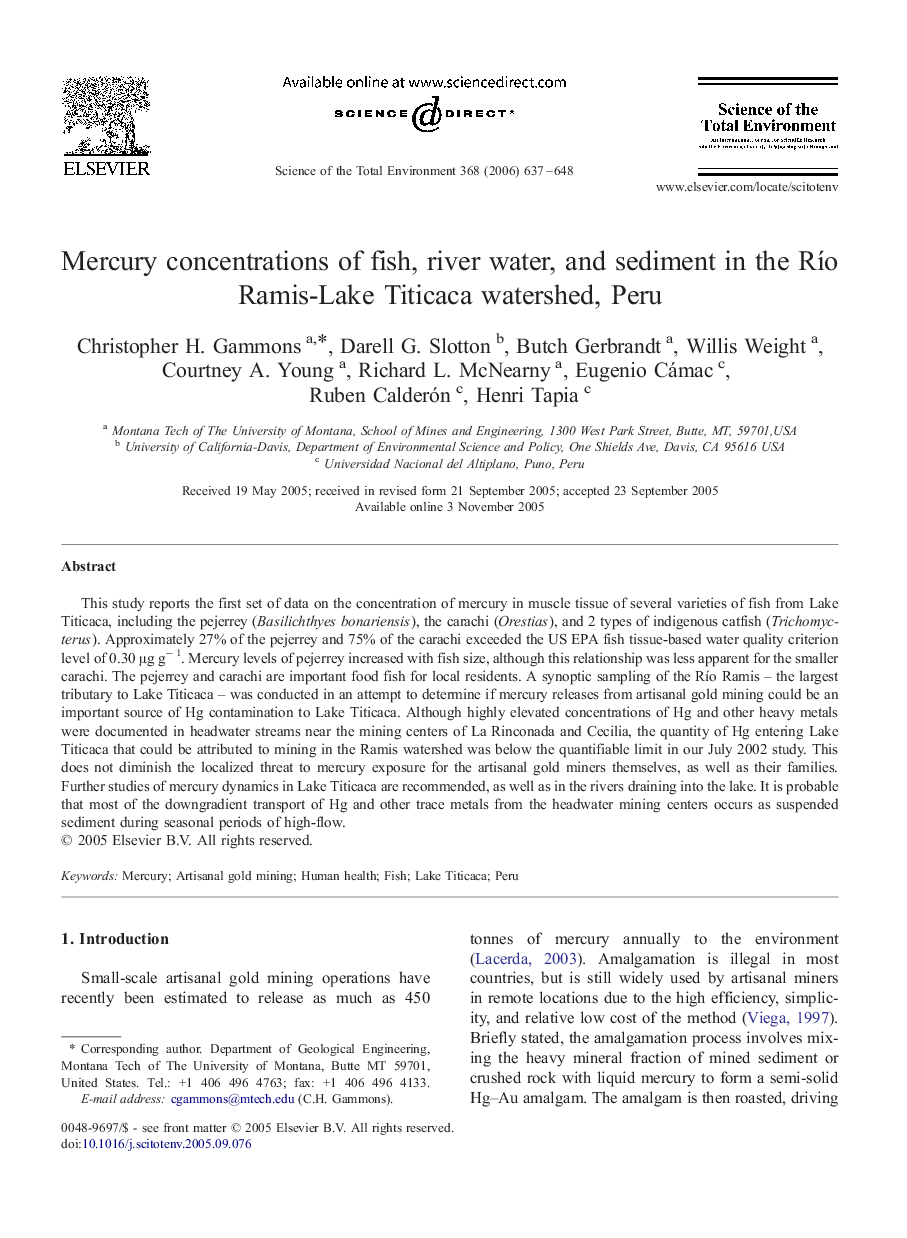| Article ID | Journal | Published Year | Pages | File Type |
|---|---|---|---|---|
| 4433871 | Science of The Total Environment | 2006 | 12 Pages |
This study reports the first set of data on the concentration of mercury in muscle tissue of several varieties of fish from Lake Titicaca, including the pejerrey (Basilichthyes bonariensis), the carachi (Orestias), and 2 types of indigenous catfish (Trichomycterus). Approximately 27% of the pejerrey and 75% of the carachi exceeded the US EPA fish tissue-based water quality criterion level of 0.30 μg g− 1. Mercury levels of pejerrey increased with fish size, although this relationship was less apparent for the smaller carachi. The pejerrey and carachi are important food fish for local residents. A synoptic sampling of the Río Ramis – the largest tributary to Lake Titicaca – was conducted in an attempt to determine if mercury releases from artisanal gold mining could be an important source of Hg contamination to Lake Titicaca. Although highly elevated concentrations of Hg and other heavy metals were documented in headwater streams near the mining centers of La Rinconada and Cecilia, the quantity of Hg entering Lake Titicaca that could be attributed to mining in the Ramis watershed was below the quantifiable limit in our July 2002 study. This does not diminish the localized threat to mercury exposure for the artisanal gold miners themselves, as well as their families. Further studies of mercury dynamics in Lake Titicaca are recommended, as well as in the rivers draining into the lake. It is probable that most of the downgradient transport of Hg and other trace metals from the headwater mining centers occurs as suspended sediment during seasonal periods of high-flow.
